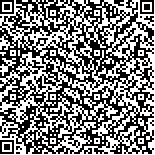| 摘要: |
| 针对新型冠状病毒肺炎疫情等突发
公共卫生事件,利用好现有各类医疗设施进行
应急医疗设施选址和建设对于减缓或阻断突
发公共卫生事件的传播具有重要意义。本文以
邯郸市主城区居民点为需求点,以现有医疗设
施点作为备选应急医疗设施候选库,以居住区
生活圈15 min范围为约束,利用GIS选址分析
技术、结合最小化设施点数模型、最大覆盖范
围模型、以现有医疗设施床位数作为容量限制
的最大覆盖范围模型三类模型进行应急医疗
设施选址,对比了现有三甲医院作为应急医疗
设施和三种选址模型结果的居民点覆盖情况。
结果表明:利用最小设施点数模型需布设55个
应急设施点以覆盖全部居民点;利用最大化覆
盖范围模型求解确定24个应急医疗设施,可覆
盖93.22%居民点;利用有容量限制的最大覆盖
范围模型求解确定63个应急医疗设施,可覆盖38.50%居民点。提出的方法和结果可为突发公共卫生事件制定应急响应预案提供依据。 |
| 关键词: 突发公共卫生事件 GIS 位置分配模型 应急医疗设施选址 |
| DOI:10.13791/j.cnki.hsfwest.20220410 |
| 分类号: |
| 基金项目:河北省科技支撑计划项目(17275801);河北省社会
科学基金资助项目(HB19YS039) |
|
| Analysis on the Location of Emergency Medical Facilities: Taking Urban District ofHandan City as an Example |
|
WANG Zhenbao,LI Huiqing,ZHU Shuangshuang
|
| Abstract: |
| Since COVID-19 epidemic broke out around the world at the beginning of 2020, it
has caused a huge impact on the economy, society, people’s livelihood and other aspects of the
world. COVID-19 is an epidemic of infectious diseases under public health emergencies, which
has the characteristics of suddenness, uncertainty and publicity, and has caused psychological
panic among the public, and the public is at a loss of what to do in the face of the epidemic and
blindly concentrates on large urban hospitals. In dealing with public health emergencies such as
COVID-19, the government need to quickly mobilize social resources, establish emergency medical
facilities, and organize and coordinate social order. In response to the epidemic situation, the
Chinese government has constructed emergency capsule hospitals for the treatment of COVID-19
patients, such as Wuhan Leishenshan Hospital and Huoshenshan Hospital, and taken “containment
strategies” such as city’s lockdown, community’s lockdown, and personnel flow tracking
management. Although the flow of people has been effectively controlled under the prevention
and control, residents still blindly gather in large general hospitals in some cities, resulting in
nosocomial infections, since large general hospitals have high-quality medical resources and are
often concentrated in the center of cities. However, the urban primary medical facilities are not used
effectively. By using the GIS network analysis tools and taking Handan main urban area as scope of
the study, this research analyzed the location of emergency medical facilities with the distribution
of traffic network, medical facilities, residential areas in specific cities and building suitable location
allocation models. In this way, we can make full use of the existing primary medical facilities in the
city and control the disorderly spread of public health emergencies such as COVID-19. Emergency
medical facilities are temporary medical facilities, constructed when public health emergencies
broke out, by the allocation of urban medical staff and resources. Emergency medical facilities
provide initial medical services to their residents, such as swabs, supplies of medical supplies,
etc., and provide temporary treatment and referral to large urban general hospitals or newly built
emergency mobile cabin hospitals according to the severity of the patient’s illness. The emergency
medical facilities form the front line of defenses in response to public health emergencies, and thus
prevent the population from congregating blindly in large general hospitals. If urban resources are
insufficient, only the four three-class general hospitals with the best scale facilities and technicalforce can be used as emergency medical facilities. In this case, under the requirement of 15 min walking accessibility, the average number of resident points
served by the four emergency medical facilities was 61, and the single emergency medical facilities had the highest utilization rate, with only 23.28% of the
residential areas could be covered. When resources are relatively abundant, although 15 min walking accessibility conditions cannot cover all settlement,
but it can make use of analysis to solve the maximum coverage model, makes the emergency medical facility with high efficiency, in this case you need to 21
modification of existing medical facilities, making it the emergency medical treatment facilities, the proportion of residential sites it can serve is 93.22%, and
the average number of residential points served is 37. Compared with the minimized facility point model, it has a higher proportion of covered residential
sites. When considering the service level and capacity of the current medical facilities, according to the existing number of beds in each medical facility
and the potential infected population determined by the infection rate of the close contacts of Novel Coronavirus, the reassigning and redistribution of
medical staff and supplies are not taken into account. The maximum coverage model with capacity limits was used to solve the emergency medical facilities,
which could serve 392 settlements, and the average effective service of each emergency medical facility was six settlements, accounting for 38.50% of
the settlements that could be served. Therefore, it is suggested to analyze the site selection of emergency medical facilities on the basis of the maximum
coverage model considering capacity limitation and the minimized facility points model, so as to increase the proportion of emergency medical facilities
serving settlements through the allocation of medical personnel and medical supplies. The methods and results proposed in this paper can provide a basis
for the development of emergency response plans for public health emergencies. However, the number of beds of medical facilities as the service capacity
of emergency medical facilities in this paper should be considered as appropriate in practical application, since some medical facilities may be difficult
to empty all the beds in a short time. In future studies, a certain proportion of the number of beds (for example, 50% or 70%) can be used as the service
capacity of the emergency medical facilities, and the location allocation model can be used to select the location of the emergency medical facilities. |
| Key words: Public Health Emergencies GIS Location Allocation Correction Models Site Selections of Emergency Medical Facilities |


